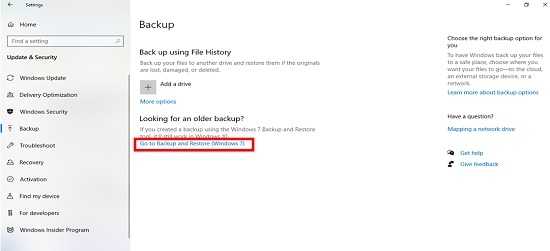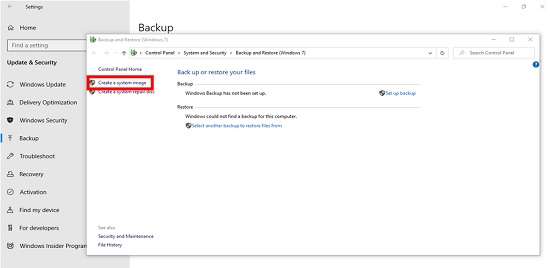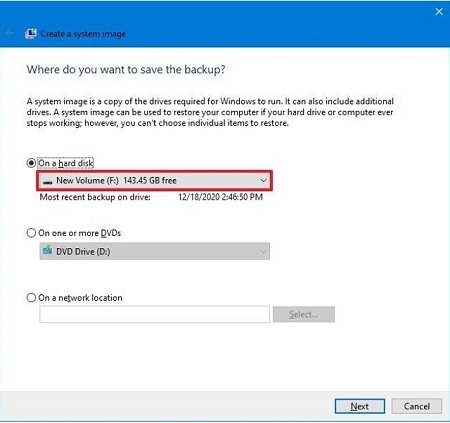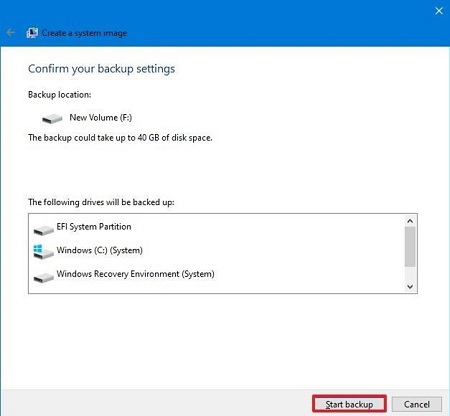It is surprising that you have to look around the Internet to find a comprehensive and detailed guide on the process of backing up your Windows 10 computer with built-in tools. You don't even find information in Microsoft's official knowledge base pages. In this article, however, I will show you step-by-step how to make use of the backup features included in Windows 10 to protect your data and computer system.

Are you thinking of having your PC cleaned and have no idea how to start with the backup process? Manually storing files can be tedious at times and may even cause you to miss a lot of important files in the process. By default, your Windows 10 backups are created on an automatic schedule. However, you can manually create a backup for your operating system, data, and settings at any time.
Backup and Restore is a feature of Microsoft Windows introduced in several versions. It allows users to create backups when doing intensive cleaning and updating and then restore from the backups created earlier. You can also restore the contents in your Windows 10 if your hard drive crashes, with just a few clicks.
Like most systems nowadays, there are various ways available to help you back up your files before doing any cleaning, installation, upgrading, or downgrading. For instance, you can use a third-party system, an online drive like OneDrive or Cloud Storage, and employing the use of an external drive.
The Windows backup is a safety feature that is mostly hidden within the Windows 10 system that lets you back up your files with ease. It is part of the Backup and Restores feature and it allows you to make copies of your data and do temporary full backups when necessary, especially in case of emergencies.
In this article, we will look at a detailed step-by-step guide for successfully backing up your Windows 10 using the Windows backup.
How to Use Windows Backup?
- Go to the Settings then go to Update & Security and click on it.

- On the left pane, locate the Backup option and click on it.

- Once the Backup window has opened, click the Go to Backup and Restore (Windows 7) option under the Looking for an older backup section.

- A window will pop up after clicking the previous button. Click on the Create system image on the left panel.

- Select the drop-down menu of the On hard disc and choose your desired location where you want to store your full backup.

- Click Next.
- Select any additional backup drives.
Note: As a necessary means of precaution, consider also backing up all of your files in an external drive.
- Click Next.
- Click the Start Backup button to initiate the backup process.

- After doing that, you will receive a prompt for a system repair disc. Click No. Then, Close it.
Once you’re done, the system will create a “Shadow Copy” of all of your files and apps. You can still be able to work on your device while this is happening. After the backup process is complete, you may disconnect the external drive and store it somewhere safe for future restoration after doing your necessary maintenance checks and cleaning.
Summary: Windows 10 using Windows Backup
- Open the Control Panel.
- In the search box type Backup
- Click Recover system settings or your computer
- Select a specific date from the calendar and click 'Next'.
- Windows shows you a recovery summary. If you're happy, click 'Finish' to recover your computer.
- The configuration takes about five minutes, during which time your PC will restart.
- The first step is to choose the restore point you want to use.
- You'll see a Please wait message and then a new window with a list of backups.
Conclusion
Learning how to properly back up and restore your PC is one of the main responsibilities of a good PC owner. It is important to know how to generate your systems backups and restore them on your own. You should backup your files periodically so you don’t lose them. We hope that this article helps you backup up your pc with ease using the Windows backup.
However, you may want to get the assistance of an expert in case of emergencies or when you are unable to use Windows backup to backup Windows 10. Feel free to share your experience with us by leaving a comment below.